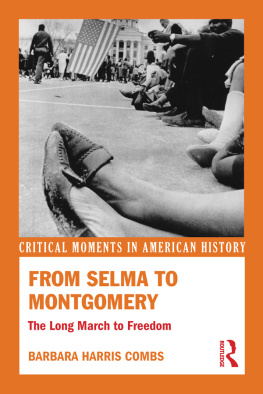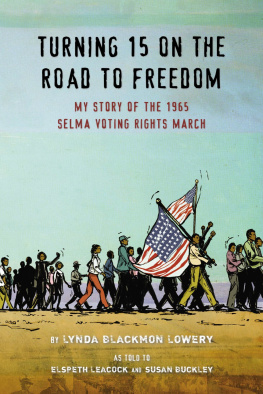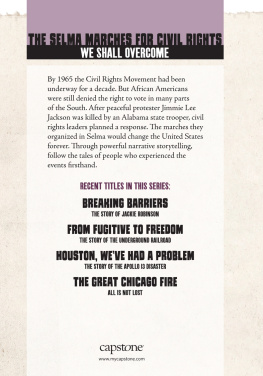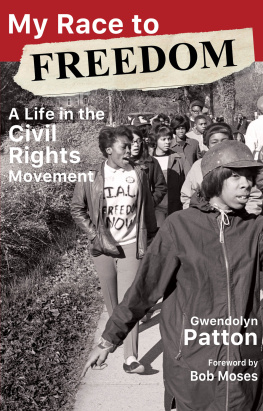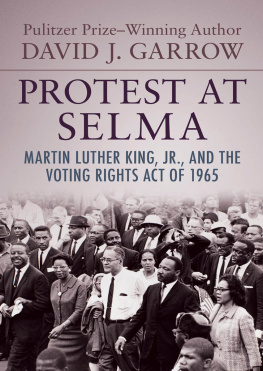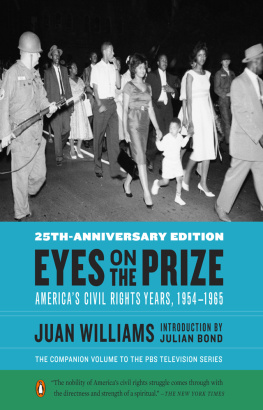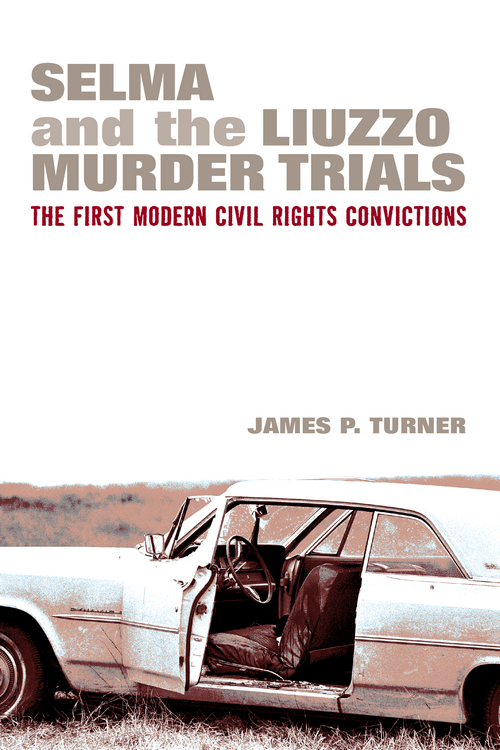
Praise for Selma and the Liuzzo Murder Trials
Jim Turner recounts the true story of how a team of skilled federal lawyers accomplished the seemingly impossibleconvicting the klansmen who murdered Viola Liuzzo in 1965a victory for honest, non-partisan civil rights enforcement that ended a hundred years of klan immunity to the sting of justice.
Roy Reed, New York Times reporter who covered Selma and the Liuzzo trials
The thorough, evidence-based approach that Jim Turner describes was key to securing justice in the South fifty years ago, and it is just as important today as we craft nationwide policies to combat the persistent impact of racial prejudice and discrimination.
Sarah Rosen Wartell, President, The Urban Institute
Jim Turner shows us how critical an active, independent Civil Rights Division was to ending Jim Crow. If you have any interest in civil rights history and our policies todayand who doesnt? you have to read this book.
Stanley Pottinger, former Assistant Attorney General for Civil Rights and author of New York Times best-seller The Fourth Procedure
All people of good will, regardless of their party preference, can learn from Jim Turners inspiring story of one of the first civil rights victories. His courageous action is still needed today. Through dedication, perseverance and honest law-enforcement we can protect the basic civil rights of all Americans.
John Dunne, former Assistant Attorney General for Civil Rights, 199092
James P. Turners compelling picture of state prosecutions marred by local prejudice and the successful federal prosecution in this landmark case is a timely reminder of why we need a strong Civil Rights Division in the U.S. Department of Justice when state law enforcement fails to protect our rights.
Brian K. Landsberg, McGeorge School of Law
We need more Jim Turners in government today.
Ari Berman, author of Give Us the Ballot
Jim Turner has written a wonderful book. He gives us an insiders view of one of the most important civil rights cases of the 1960s. Forget Grisham and Turow. This is the real deal.
Gary May, University of Delaware, Author of The Informant: The FBI, the Ku Klux Klan and the Murder of Viola Liuzzo and Bending Toward Justice: The Voting Rights Act and the Transformation of American Democracy
Jim Turners account of finally ending klan terror in the south calls each of us to recommit ourselves to do all we can to finish the work begun at Selma. Theres still work left to be done. Get out there and push and pull, until we redeem the soul of America.
Congressman John Lewis, who led the 1965 Selma to Montgomery Freedom Marches
Jim Turner knows we will succeed because, in this country, basic human rights for all is our shared heritage. His first case was the 1965 conviction of the Alabama klan killers of Viola Liuzzo, an innocent Detroit housewife who came to help Selmas blacks with few champions. That same year as a young white lawyer raised in Alabama cotton fields where blacks were treated like slaves, I decided to also do civil rights work. Selma and the Liuzzo Murder Trials is a civil rights legacy for all who should know our history.
Morris Dees, Founder, The Southern Poverty Law Center
Fifty years ago, American justice triumphed over the Alabama klanthanks to the fearless work of the Civil Rights Division. Jim Turners moving account reminds us that we can overcome the darkest attacks on human freedom, a lesson well worth remembering today as we confront new challenges to our basic civil rights.
Deval Patrick, former Governor of Massachusetts and former Assistant Attorney General for Civil Rights
Selma and the Liuzzo Murder Trials
The First Modern Civil Rights Convictions
By James P. Turner
University of Michigan Press
Ann Arbor
Copyright 2018 by James P. Turner
All rights reserved
This book may not be reproduced, in whole or in part, including illustrations, in any form (beyond that copying permitted by Sections 107 and 108 of the U.S. Copyright Law and except by reviewers for the public press), without written permission from the publisher.
Published in the United States of America by the
University of Michigan Press
Manufactured in the United States of America
A CIP catalog record for this book is available from the British Library.
ISBN 978-0-472-07374-0 (hardcover : alk. paper)
ISBN 978-0-472-05374-2 (paper : alk. paper)
ISBN 978-0-472-12353-7 (e-book)
To the committed men and women of the Department of Justice Civil Rights Division, who spent the last fifty-five years building a permanent Constitutional law enforcement program. This program uses federal civil suits and criminal prosecutions to enforce laws that prohibit discrimination on the basis of race, national origin, gender, age, sexual preference, or disability in voting rights, schools, employment, housing, and public accommodations.
It was an honor for me to work with them.
Contents
by Ari Berman
I first contacted Jim Turner in January 2014 when I was researching my book Give Us the Ballot about the history of the Voting Rights Act. He told me he had some documents in his basement I was welcome to come look at.
I took a train to Washington, DC, and drove out to Jims home in Maryland, which felt like a million miles from the Beltway. It had just snowed and I nearly skidded off the driveway and hit a tree trying to find his secluded house in the woods.
When I arrived, Jim took me down to the basement, which housed thousands of pages of documents spanning his three decades in the Justice Departments Civil Rights Division, organized neatly by year and subject matter. It was a historical gold mine. The archivesnow housed at the University of Michiganwere a testament to how much occurred during that time and Jims pivotal role in helping to shape those events.
If the Civil Rights Division is known as the crown jewel of the Justice Department, then Jim was one of its diamonds. Hes one of the unsung heroes of the civil rights revolution.
To say that Jim joined the Civil Rights Division at a pivotal moment in American history would be a massive understatement. His first day on the job was February 22, 1965. Just four days earlier, Alabama state troopers had shot a twenty-five-year-old unarmed black man named Jimmie Lee Jackson during a rare night march in Marion, Alabama. Historian Taylor Branch called Jackson the first martyr of the current campaign for the vote.
At a mass meeting in Selma, the next county over from Marion, James Bevel of the Southern Christian Leadership Conference suggested the idea of marching from Selma to Montgomery to protest Jacksons death. Jackson, a woodcutter and the youngest deacon at his church, had tried unsuccessfully to register to vote five times in Perry County, where only 265 of 5,202 eligible black voters were on the voting rolls. Jimmie Jackson just wanted to vote, Martin Luther King Jr. said at his funeral. Now we must see that Jimmie Jackson didnt die in vain.
The march following Jacksons death became known as Bloody Sunday, when Alabama State Troopers brutally beat 800 civil rights marchers, led by John Lewis. The atrocities from Selma, broadcast that evening when ABC interrupted the prime-time premiere of Judgment at Nuremberg, shook the nation like no other event in civil rights history. Thousands came to Selma in solidarity. One of them was Jim Reeb, a Unitarian minister from Boston. After a second attempted march from Selma to Montgomery two days later, Reeb took a wrong turn home from dinner and was attacked by white supremacists. He became the second martyr of the Selma campaign for voting rights.
Next page

